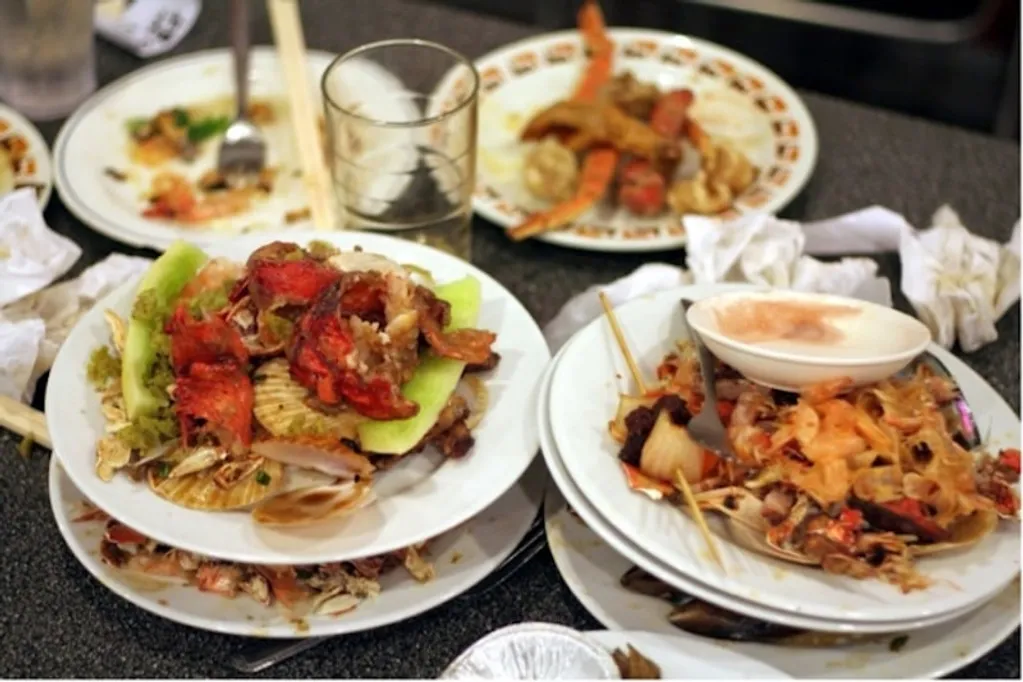How Much Food Is Thrown Away Each Day?
More than 130 billion pounds of food are thrown away each year in the United States alone. That means approximately 356 million pounds of food goes to waste every single day, or the equivalent of roughly 650,000 fully loaded Boeing 747 jets. All of this waste translates to billions of dollars lost for restaurants and supermarkets each year. It also harms the environment as food in landfills produces pollution and greenhouse gases.
Food waste makes up 22% of municipal solid waste, making it the largest component of landfills in the United States. Learn how much is wasted by households, restaurants, grocery stores, and institutions—and explore effective solutions.
Common Sources of Food Waste
When we look closer at where food waste comes from, households are the biggest source, throwing away an estimated 76 billion pounds of food each year through spoilage, over-preparing, and uneaten leftovers. Restaurants and food service businesses come in second behind households, discarding an estimated 22 to 33 billion pounds of food each year, while institutions such as hotels, hospitals, and schools add another 7 to 11 billion pounds.
The third largest source of food waste is grocery stores and supermarkets, which throw away close to 10 billion pounds of food each year, much of it in unsold fruits and vegetables.
How Much Food Do Grocery Stores Throw Away?
Food is thrown out in the supermarket when it is not sold by the sell-by date or starts to rot. This most commonly happens to fruits and vegetables that are at the bottom of the pile and not taken, so they go bad or overripe.
With consumers demanding fresh produce, many grocery stores end up throwing away perfectly edible food. Part of the problem is shoppers demanding stocked shelves and buying more than they need. As a result, perfectly good food, such as a banana with brown spots, is often discarded by the retailer.
The USDA estimates that supermarkets lose $15 billion each year in unsold fruits and vegetables alone, and the total amount of grocery store food waste is close to 10 billion pounds annually.
Impact of Walmart’s Operations
We can't discuss grocery store food waste statistics without mentioning Walmart, as it is the largest grocery retailer in the United States. With thousands of locations across the country, Walmart generates millions of pounds of food waste each year. Much of that waste consists of unsold produce, baked goods, and packaged items that pass their sell-by dates.
To address this, Walmart has launched programs to reduce food waste, including selling “imperfect” produce through its “Fresh Imperfect” initiative and donating unsold food through its partnership with Feeding America. Even so, the scale of Walmart’s operations means its food waste totals remain higher than any other single grocery chain in the country.
How Much Food Do Restaurants Throw Away?
Restaurants in the United States generate about 22 to 33 billion pounds of food waste each year, much of it from oversized portions that customers rarely finish. On top of that, many restaurants and institutions are hesitant to donate unserved leftovers because they fear legal consequences if someone were to get sick.
The concern is that if donated food were to make someone sick, the business could be held legally responsible. In reality, the Bill Emerson Good Samaritan Food Donation Act protects food donors from liability when food is given in good faith, but not all restaurant owners are aware of this law, and some still worry about potential lawsuits.
How Much Food Is Wasted at Home?
Even though restaurants and grocery stores waste massive amounts of food, households are still the single largest source of food waste in the U.S. According to the EPA, American homes throw away an estimated 100 billion pounds of food every year.
Household food waste typically comes from spoilage or over-preparing. When making food for themselves or their family, people typically make more than they need, and leftovers are either tossed out right away, or they sit too long in the fridge until they spoil.
Solutions for Reducing Restaurant Waste
Managing food waste is one of the biggest challenges restaurants face today. Oversized portions, menu items that don’t sell, and uneaten leftovers can all add up quickly—not just in cost, but in environmental impact.
Sourgum provides waste and recycling services in a centralized platform that gives businesses total control, whether they operate a single location or manage thousands nationwide. Our platform enables full visibility at every step and makes it easy to handle every waste stream.
Restaurants can reduce waste and cut costs by:
Tracking food waste: Our reporting tools show exactly what is being thrown away, helping you adjust portion sizes, menu offerings, and purchasing habits.
Recycling and composting: We separate food scraps, recyclables, and landfill waste to divert as much debris as possible from landfills.
Manage everything in one place: Schedule and monitor recurring pickups across every location through one platform.
Reduce costs: On average, customers save up to 50% on waste services while improving operational efficiency.
Nationwide service: With 5,000+ haulers and same-day delivery, you can rely on consistent service anywhere in the U.S.
By partnering with Sourgum, restaurants can lower costs, simplify operations, and make a measurable impact on reducing food waste. Contact us to learn more.
Solutions for Reducing Food Waste at Home
Take a look at our guide for reducing food waste for in-depth recommendations. In the meantime, here are a few practical tips you can put into action right now:
At the Grocery Store:
Stick to your grocery list
Check each week what you use and don’t use
Don't be afraid to buy “ugly” fruits and vegetables
At Home:
Store foods correctly so they do not ripen too fast
Keep your fridge clean so you don’t lose track of the food you have
Save your leftovers
Keep track of expiration dates
Freeze food to eat later
Pack your lunch from home instead of eating out
Don’t overserve food
Keep track of the food you throw out so you don’t buy the same items again unnecessarily
Donate food if you know you won’t be able to eat it before going bad




